Spongy Moth
The spongy moth, Lymantria dispar (formerly called gypsy moth), is an invasive insect that defoliates trees and shrubs, including oaks, birch, lindens, crabapple, aspen, and willow.
In the summer of 2023, an outbreak of the spongy moth was observed in the far western parts of Kenosha County (Twin Lakes and Town of Randall) and in several other counties in Wisconsin. During its last outbreak in Wisconsin in 2010, nearly 347,000 acres of tree defoliation occurred.
Impact of Spongy Moth
Due to defoliation from spongy moths, trees suffer a decrease in plant vigor, making them vulnerable to other pests and winter damage. Spongy moth outbreaks can destroy tree habitats for pollinators and wildlife. It also reduces the aesthetic and recreational value of trees.
Mature, healthy trees can generally tolerate up to 2 years of damage. If the infestation continues for 3 consecutive years, trees can suffer from severe branch deterioration, which can result in total collapse.
Spongy Moth Identification
A spongy moth has four life stages: egg, caterpillar, pupa, and adult.
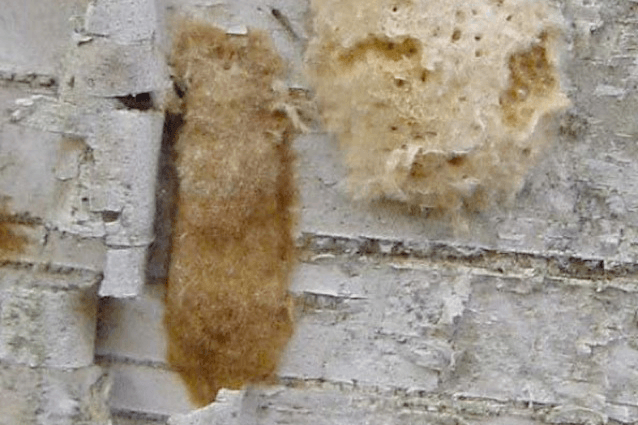 Egg Stage
Egg Stage
The egg stage begins in August and lasts until mid-May. Viable egg masses (left) are roughly oval/ teardrop shaped, 1-2 inches long, buff tan in color, and covered with dense, fine hairs that give a spongy appearance. Each mass contains 500 to 1000 eggs.
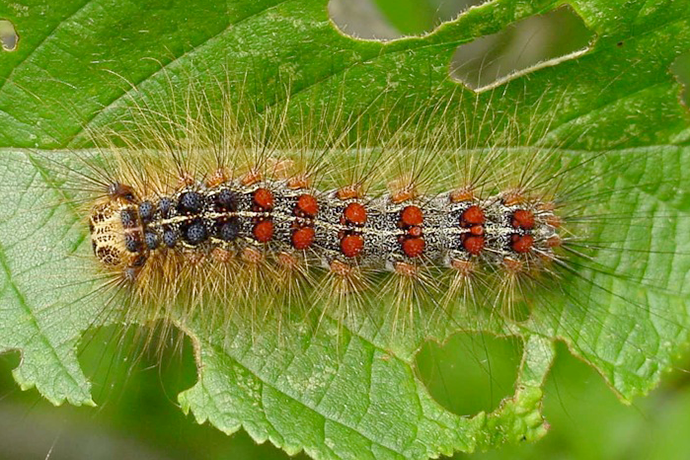 Caterpillar Stage
Caterpillar Stage
As caterpillars, spongy moths develop five pairs of raised blue spots and six pairs of raised reddish spots on their bodies. They feed for five to six weeks before pupating.
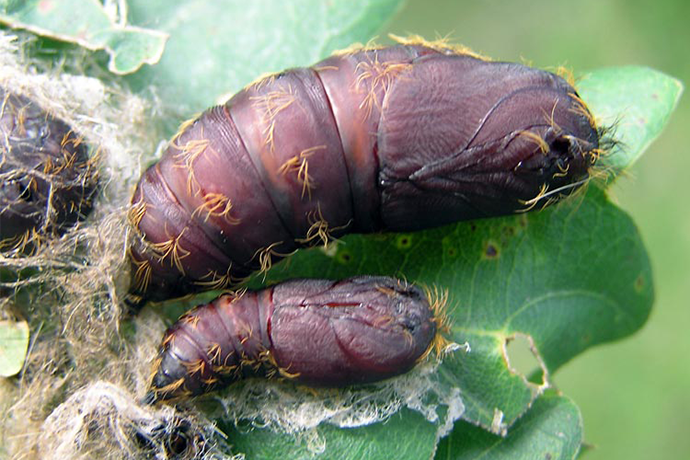 Pupa Stage
Pupa Stage
Starting in late June to August, spongy moths will pupate, usually for about two weeks.
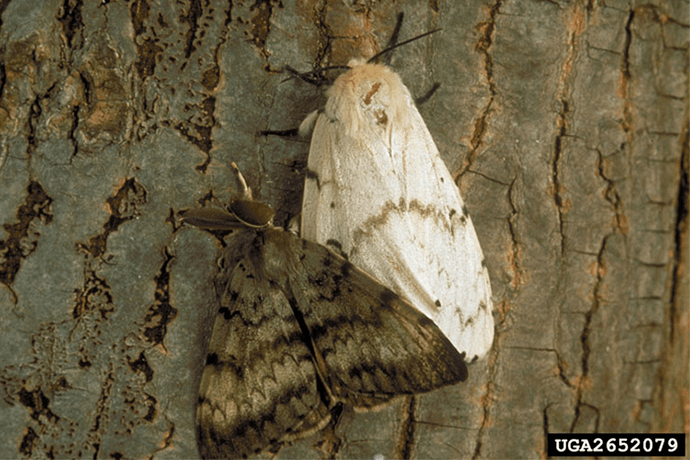 Adult Stage
Adult Stage
Female spongy moths (top) are generally light tan with brown or dark tan bars on their wings. They do not fly.
What Can You Do
Destroying egg masses during the fall and winter months can help in minimizing next year's spongy moth population. In late fall (after the leaves have fallen), check tree branches and trunks and any other outdoor surfaces to locate the egg masses.
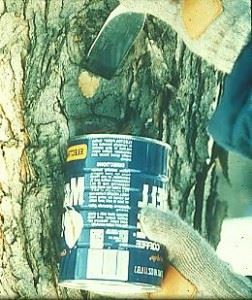 Scraping Method
Scraping Method
Scrape the egg masses using a putty knife and drop it in a soapy water bucket for a few days before disposing of it. Don’t leave any bits of the fallen egg masses on the ground, as they will hatch next spring. Always wear gloves when handling the egg masses as the hairs can cause skin rashes.
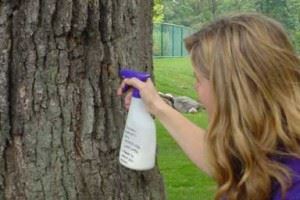 Spraying Method
Spraying Method
Egg masses can be directly sprayed with Golden Pest spray oil or Dormant horticulture oil from late fall through early spring. Make sure to read the product label and follow the directions. Don’t use motor oil or any other type of household oil.
Professional arborists are available for hire to spray for egg mass on tall trees. For a list of professional arborists, visit the Wisconsin Arborist Association website.
Find a spongy moth egg mass in a Kenosha County park? Report it here.
Additional Resources
- University of Wisconsin-Extension Spongy Moth website
- Wisconsin Spongy Moth Portal
- Wisconsin DNR: Spongy Moth
*Photo credits: Bill McNee, WI DNR; Bob Queen, WI DNR; Cliff Sadoff, Purdue University; Milan Zubrik, Forest Research Institute–Slovakia